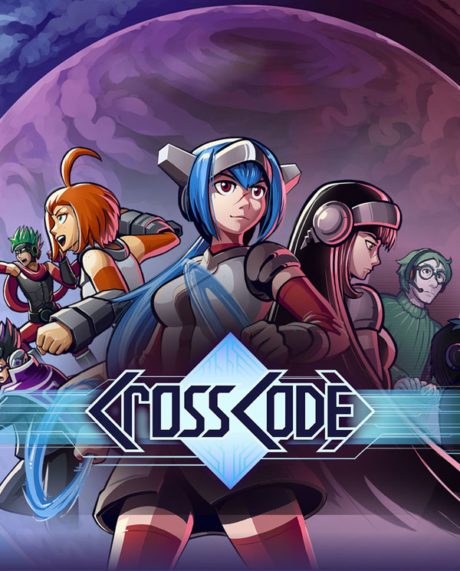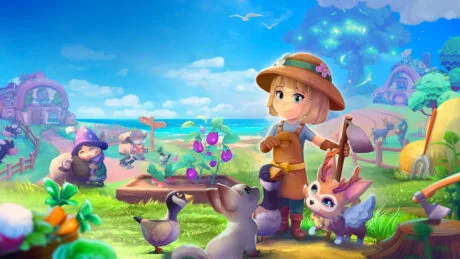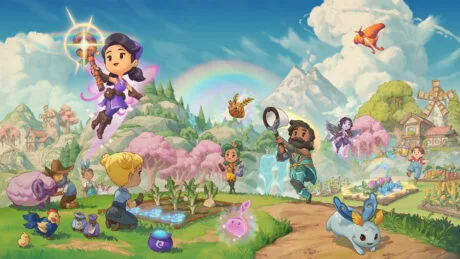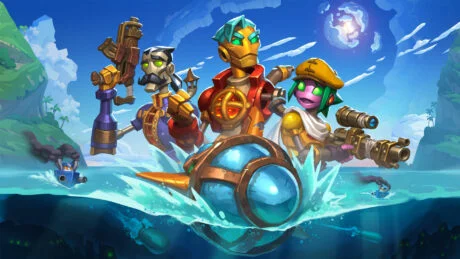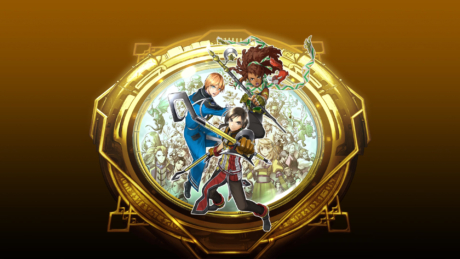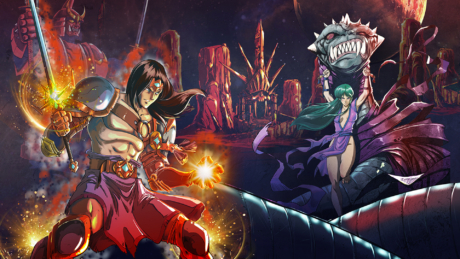Purrr....
- Wonderful 16-bit style pixel art
- Fast-paced battle system
- Mind-bending puzzles
- Many accessibility options
Hisss!
- No voice acting
- No controller rebinding
Platform
Switch, PlayStation 4, Xbox One, PCPublisher
Deck 13Developer
Radical Fish GamesGenre
Action, RPGPlayers
1File Size (Minimum)
1.7 GBRelease Date (NA)
Jul 9, 2020Filed Under
Originally appearing as an Indiegogo funded campaign in 2015, CrossCode is a colorful, 2D, top-down, single player, open world, action-adventure RPG, reminiscent of 90’s Square SNES games. The protagonist Lea is dropped into the online MMO CrossWorlds, searching for her memories and seeking to avenge her brother’s death. However, while many players are simply avatars, she must make progress without being discovered as being something more than that.
A Completed Project

CrossCode starts with an avatar, Shizuka, being warped into a virtual world of CrossWorlds and searching for her dying brother, Satoshi, who had been abducted and forced to work on an unknown project. Along the way, Shizuka is taunted by the abductor, who spawns in enemies to stop Shizuka’s progress. During this sequence, CrossCode introduces the player to the fast-paced melee battles. Shizuka arrives just in time to see her brother complete the work. Then he collapses and, before passing, asks her to get away.
A Mysterious Spawn
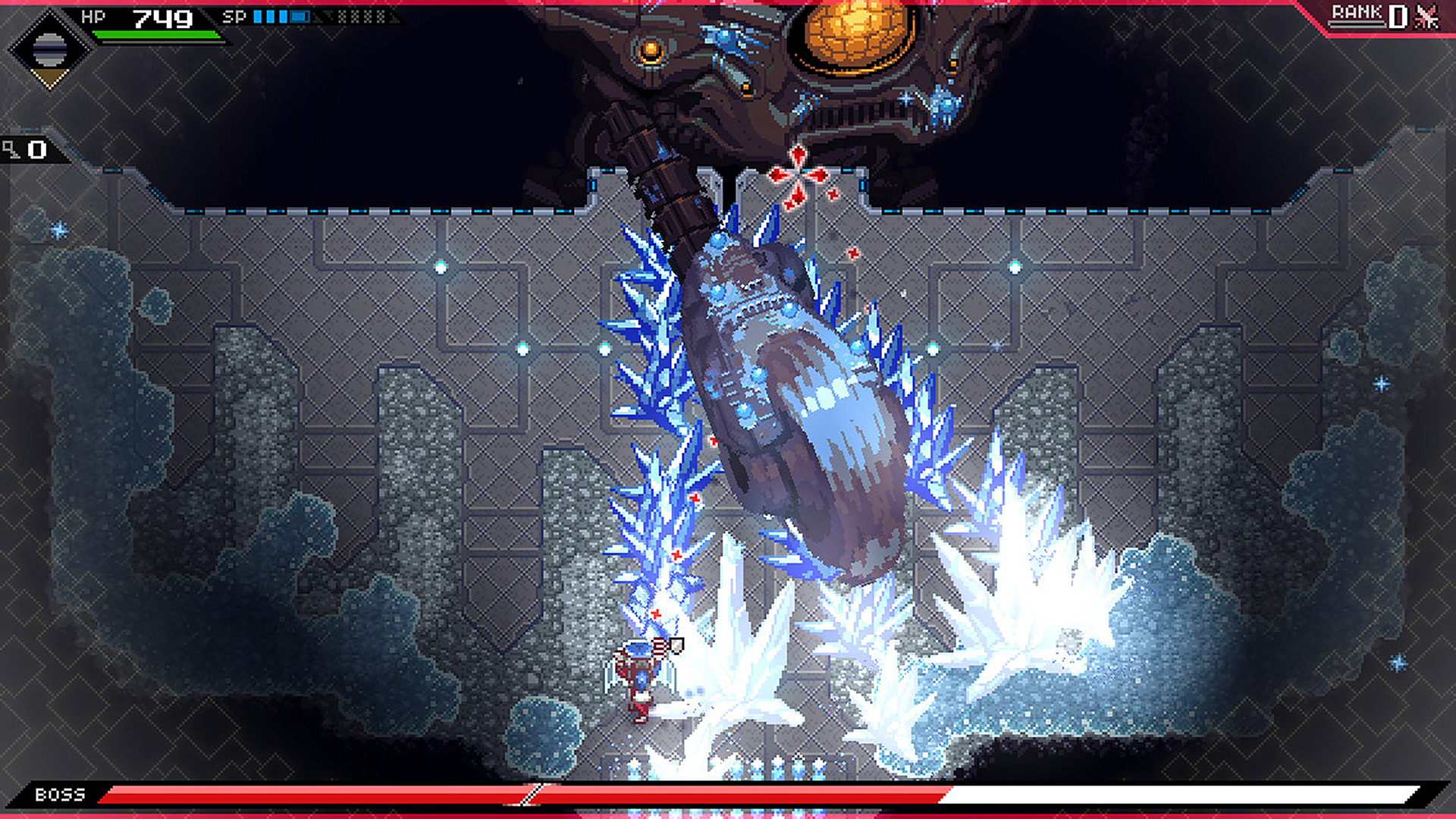
After the opening sequence, an avatar is spawned into the world of CrossWorlds—Lea, a Spheromancer class, and the main character in CrossCode. A short dialog between Lea and an unnamed character transpires, in which we learn that Lea’s speech synthesizer has failed and that her memory is lacking. Here is where CrossCode introduces the Virtual Ricochet Projectiles (VRPs), the ability to shoot balls that ricochet off surfaces, as well as damage enemies. This acts as a tutorial for players, introducing the VRP mechanic, as well as presenting CrossCode’s puzzle mechanics that revolve around VRP.
Puzzle solving is a large aspect of CrossCode. Lea will regularly be faced with a puzzle to solve before she can progress through the world, generally gated by a locked or blocked path. These puzzles can be as straightforward as firing a VRP at a stationary object, or as challenging as Lea needing to fire careful shots to deflect from other objects to get the VRP to its destination. Still, no matter how tricky they get, it feels good to get it just right.
Anyway, once Lea completes the VRP instruction and the accompanying puzzles, she is introduced to the open “online” world of CrossWorlds. Within CrossWorlds, there are many things for Lea to do, in addition to the story. She can take on a number of side quests, as well as Zelda style dungeons, complete with bosses and new items found inside, which can be used in the world to unlock new paths and items. Gaining enough experience will provide a level up, which gives points for the Circuit Grid, where points can be spent for permanent character stat upgrades. These stat upgrades are required to defeat later enemies.
Crossing the World

Lea will meet many other avatars along the way, but unlike the avatars, who are controlled by a being in Real Space, Lea is her own being, without a player behind her avatar. She must progress through CrossWorlds without being detected as a non-player. This makes two stories to follow, one for CrossWorlds, and one for Lea, and both are engaging and well developed.
The dialog between characters is well written and humorous. Much of the dialog at the beginning is largely one sided, as Lea cannot speak. As the story progresses, however, Lea does regain some ability to speak, making for more actual conversation. Dialog is strictly text based; voice options would have made a great addition to CrossCode, but the lack of voice audio fits the graphical style of the game.
Some avatars will join Lea’s party, aiding in combat. Party members will attack enemies on their own, but CrossCode provides AI behavior modifications for tweaking the party’s actions for more offensive or defensive options. While these options are not necessary for survival, additional options are always welcome.
The combat is extremely responsive, with very quick melee attacks, or with the VRP, controlling like a twin stick shooter. Defeating enemies in rapid succession will build your graded combo meter, giving more rewards for building a larger one. In addition to offensive attacks, Lea has the ability to dodge, as well as use a shield to block incoming projectiles. Dodging and defensive play is integral to combat as many enemies will charge, generally indicated by the enemy flashing red. Later enemies will require a mix of both ranged and melee combat, swapping between defensive, offensive, and elemental changes on the fly. Failure will result in a death, but unlike many games of its type, which revive you at the last save, CrossCode revives the player at the entrance of the last room entered, saving lots of time upon death.
Pixel-Based Feast for the Eyes and Ears

CrossCode takes its graphical and play style inspiration from games like Secret of Mana and similar titles. The top-down perspective coupled with the colorful palette produces beautiful pixel-based art. Every detail of the world is easy to make out, from enemies to other characters, with plenty of fauna and other environmental objects to fill in any gaps. The music, composed by Deniz Akbulut, fits the worlds of CrossCode amazingly well. From the uplifting cheery overworld music to the dungeon music, the tunes are memorable, and certainly do not overstay their welcome.
Official CrossCode Soundtrack available to purchase.
Accessibility
The developers of CrossCode want as many people as possible to enjoy the game, and have introduced accessibility features for those who want to experience the story and gameplay, but are not as skilled as others. In the options menu, there are sliders for received damage, enemy attack frequency, and the speed at which puzzles move. If wanted, these sliders can be adjusted to as low as twenty percent for received damage and fifty percent for the others. There are plenty of other options that can be adjusted as well, from interface options to simple button swaps. However, complete controller rebindings are not available; those must be configured at the OS level.
Final Digital Thoughts
CrossCode is a wonderfully told, and downright fun to play game. Fans of Secret of Mana and similar RPGs will find themselves right at home. CrossCode is full of charm, and with the accessibility sliders available, there is no excuse for not getting your paws on this game and enjoying everything this polished title has to offer. And did we mention it’s coded completely in HTML5? CrossCool!
A PlayStation 4 code was provided for this review. CrossCode available now for the Nintendo Switch, PlayStation 4, Xbox One, and PC. The physical edition boxed version available now for pre-order.
